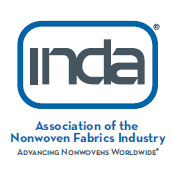 » » »
Paolo Ocleppo
» » »
Paolo Ocleppo
Segment Manager, Sandvik Hyperion
Paolo Ocleppo was born in 1978 in Italy. After his Mechanical Engineering Degree at the Politecnico of Turin (Italy), he moved to France and in 2006 joined the Sandvik Group. Since then, he gained reputation in the rotary cutting solutions for the hygiene market, by holding different positions in the company: first as a Sales Engineer, then as Product Manager and today as Segment Manager. In his role he is responsible for the strategic business development of the Sandvik rotary cutting solutions across the world, mainly in the hygiene sector, with both converting line manufacturers and hygiene producers.
The Sandvik Group is a high-technology and global industrial company with about 45,000 employees in 130 countries. In the hygiene nonwovens market, Sandvik offers high-tech products and services for rotary die cutting systems.
Wednesday 4:00 pm - 5:00 pm
Game Changers: Machine & Technology Developments
Smart, Digital, Connected Hygiene Converting Lines
Today’s world is more and more connected. Not only people are interacting to each other through different devices, but they are also doing it with several objects which are part of every day’s life. The industrial sector is not an exception, with the so-called Industry 4.0 trend, fostering automation and data exchange within the manufacturing technologies. In the introduction, the Industry 4.0 meaning and concept will be presented, bringing some examples of how it's implemented in different sectors and showing its exponential growth. The paper will then specifically focus onto the hygiene market for babycare, femcare and adultcare products. It will show how machine makers and hygiene producers are today moving to connected machines, by collecting data and analyzing them, to support operational decisions. A review of the current offer made available by major machine makers, as well as some custom-made system implemented by hygiene producers, will be presented. This will be complemented by case studies, highlighting the benefits reported by converting line manufacturers and hygiene product producers. Not only hygiene machines are connected, but also sub-component suppliers are working to bring intelligence to their systems. This is in particular true for those solutions which are critical for the productivity of a hygiene machine, like glue, bonding or cutting systems. Some examples of the current available offer for those sub-components and case studies with reported benefits will be analyzed. The conclusion will give some insights of the main impact and future evolution of the Industry 4.0 trend in the hygiene market, summarizing the benefits it can bring, without forgetting the main challenges to overcome.
PRESENTED BY
SPONSORS
MEDIA SPONSORS









